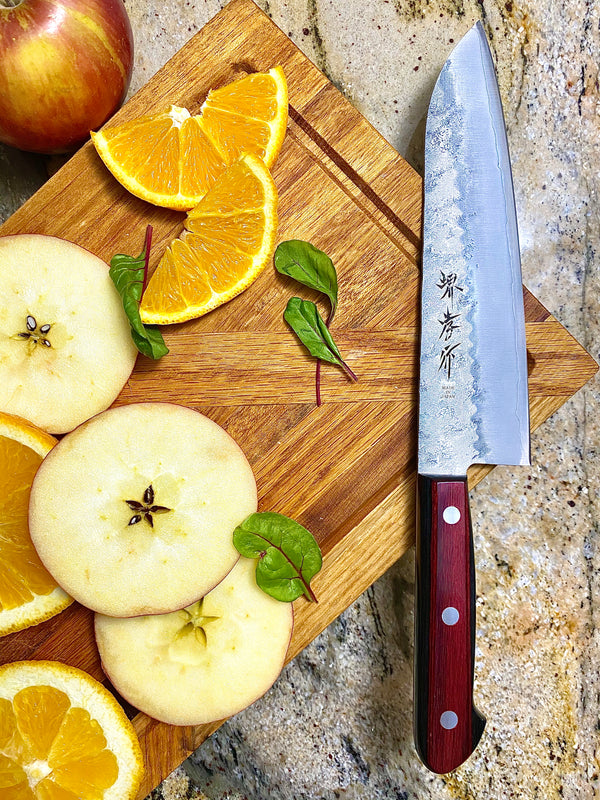Your Cart is Empty
by Ryan Shaffer December 21, 2020 4 min read

Gleaming. Sharp. Defined. An excellently crafted gyuto knife is an essential tool for every kitchen. The Japanese version of the traditional chef's knife, the versatile gyuto knife, has gained popularity across the Western Hemisphere.
For clients new to the world of artisan Japanese kitchen knives, the unfamiliar names may leave them feeling overwhelmed and unsure as to what to look for. Our experts at Hasu-Seizo will break down the many dynamic uses of the gyuto knife, as well as how to select the proper blade for work within your kitchen.
When we discuss prominent kitchen knives in Japan, an array of different blades might come to mind. Prominent knives include santoku, nakiri, and sujihiki. While there are plenty of knives to pick from, the gyuto knife operates as a standard-bearer for them all.
First, let us take a moment to properly quantify what a gyuto knife is.
Now that we have an understanding of what gyuto knives are, we can walk you through a few of their key benefits.
Japanese kitchen knives are fascinating because of their high level of quality and vast history. They are largely made throughout several key cities in Japan, including Seki, Sakai, and Echizen.
Gyuto knives operate as traditional chef's knives throughout Japan, and they hold that same reputation around the world. Gyuto knives are one of the most versatile chef knives on the market thanks to their thin blade, improved edge retention, and lightweight maneuverability.
As a result of their dynamic and professional craftsmanship, gyuto knives can be used for the following:
Shopping for the perfect Japanese kitchen blade should not be a difficult experience. Hasu-Seizo is a family-owned and operated business that offers handcrafted Japanese knives from our base in Seattle, WA. Established by residents from Osaka in Japan, Sakai Takayuki incorporates Japanese techniques, technology, and tradition to craft authentic and quality blades.
Our team at Hasu-Seizo believes the gyuto knife should be an essential addition to every kitchen. With a focus on artistic craftsmanship and long-lasting functionality, chefs of all experience levels should consider adding this knife to their collection. Acquire an artisanal gyuto knife from Hasu-Seizo and experience the difference for yourself!

by Ryan Shaffer September 14, 2023 4 min read

by Ryan Shaffer September 07, 2023 5 min read

by Ryan Shaffer August 31, 2023 5 min read

Subscribe to get 10% off your first order in addition to our monthly newsletter which gets you first dibs on newly arrived knives, custom designs, and special offers. Discount can not be combined with other seasonal discounts.